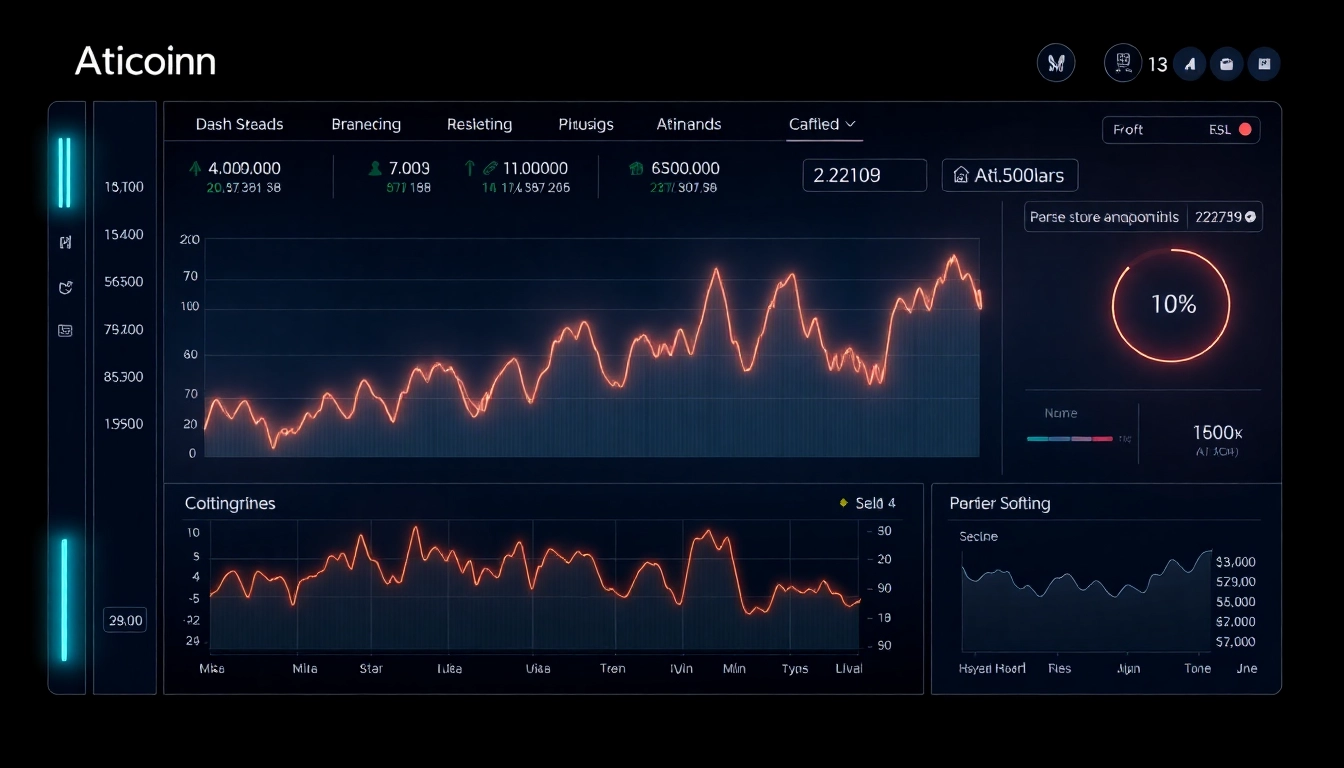
Understanding Compactors and Their Applications
In the world of construction, landscaping, and surface preparation, the importance of proper soil and material compaction cannot be overstated. Achieving a stable foundation is fundamental for the durability, safety, and longevity of any project, whether it involves laying pavements, building structures, or creating landscaped areas. A key piece of equipment that facilitates this process is the compactor—an essential tool that consolidates materials and ensures they are compacted to the desired density.
For many contractors, DIY enthusiasts, and project managers, rental options for compactors provide an affordable, flexible, and efficient means to access high-quality machinery without the overhead costs of purchasing. With a broad range of types and specifications available, selecting the right compactor for your project is critical to success. This comprehensive guide aims to clarify the fundamentals of renting and using compactors, supporting your projects with expert insights and practical tips.
Types of Compactors Available for Rent
Compacting machinery falls into several categories, each suited to specific applications and material types. Understanding these different types enables you to select equipment that optimally meets your project needs:
- Plate Compactors (Wacker Plates): These are among the most versatile compactors and are ideal for small to medium-scale projects. They feature a flat, heavy plate that vibrates rapidly to compress soil, gravel, sand, or asphalt. Variants include petrol, diesel, and electric models, with sizes typically ranging from 30cm to 50cm in width.
- Rammers (Jumping Jack Compactrs): Designed for trench work and confined spaces, rammers deliver concentrated force into a small area, making them effective for backfilling, narrow trenches, and soil stabilization.
- Vibrating Rollers: Larger than plate compactors, these are suitable for large-scale projects involving asphalt and deeper soil layers. They come in light, medium, and heavy-duty variants, often equipped with smooth or padfoot drums.
- Ride-On Rollers: For industrial or extensive construction sites, ride-on rollers improve efficiency by covering large areas quickly. They are used mainly for asphalt and compacted soil layers in highway and airport construction.
- Combined Equipment: Some rental providers offer machines that combine multiple functions, such as tandem vibratory plates or oscillating rollers, tailored to complex project environments.
Whether you need a small plate compactor for a residential patio or a heavy-duty roller for an industrial site, rental firms typically stock a comprehensive selection to cater to diverse project requirements.
Key Benefits of Renting Compactors
Opting for a rental rather than purchasing equipment offers several significant advantages:
- Cost-Effectiveness: Rental eliminates the significant capital expense of buying. You only pay for the usage duration, which is particularly advantageous for one-off or seasonal projects.
- Access to Latest Technology: Rental companies frequently update their inventory with newer, more efficient models, ensuring optimal performance.
- Flexibility: Different projects may require different machinery, and renting allows for equipment diversity without long-term commitment.
- Maintenance and Support: Rental providers typically handle routine maintenance, repairs, and troubleshooting, reducing downtime and operational costs.
- Storage and Transport Savings: Avoid the hassle and expense associated with storing and transporting heavy machinery.
- Expert Guidance: Rental companies often offer technical advice, training, and site support to maximize equipment efficiency and safety.
These benefits collectively make renting a practical, economical choice that enhances project efficiency, especially for projects with fluctuating or short-term needs.
Common Projects That Require Compactors
Compactors are integral to a variety of construction and landscaping projects. Some common applications include:
- Paving and Asphalt Work: Ensuring a solid base for roads, driveways, and walking paths by compacting subgrade and asphalt layers.
- Foundation and Footings Preparation: Compacting soil and gravel before pouring concrete in building foundations.
- Landscaping and Garden Projects: Creating level surfaces for patios, decks, and planting beds.
- Drainage and Sewer Installations: Compacting soil in trenches to stabilize pipework and prevent future shifting.
- Backfilling: Replacing excavated material around structures to provide stability.
- Concrete and Waste Material Consolidation: Compacting loose concrete or waste materials on-site to reduce volume and improve safety.
The right equipment choice and precise execution significantly impact the quality and durability of these projects.
Choosing the Right Compactor for Your Needs
Factors to Consider When Renting a Compactor
Selecting the appropriate compactor involves analyzing several key factors:
- Type of Material: Soil, gravel, asphalt, or mixed materials each require specific compactor types. For example, asphalt often benefits from vibratory rollers, while soil may be better suited to vibrating plate compactors.
- Project Size and Area: Larger areas warrant heavy-duty machines like large tandem rollers, whereas small residential projects may only need a compact, portable plate compactor.
- Accessibility: Narrow trenches or confined spaces require smaller or more maneuverable equipment such as jumping jack rammers.
- Project Duration: Short-term projects favor rental; long-term needs might justify purchasing or leasing options.
- Operator Skill Level: Some equipment requires trained operators, especially larger or more complex machines.
Matching Equipment Specifications to Project Requirements
Ensuring specifications align with your project specifics involves evaluating factors like vibration force, plate size, engine power, and operational features such as forward/reverse motion. For instance:
- Engine Power: Enhanced power facilitates faster completion and better compaction, essential for dense or heavy materials.
- Plate Dimensions: A larger plate covers more ground per pass, reducing overall project time but may be less suitable for tight spaces.
- Vibration Frequency: Higher frequencies deliver more effective compaction but could produce more noise and vibration for the operator.
Cost-Effective Options for Different Project Sizes
Cost considerations are critical. Small residential projects may only require basic, lightweight machines, which are less expensive to rent. Larger commercial projects call for heavy, high-capacity equipment that, while more costly, accelerates progress and ensures quality. Comparing rental rates and selecting models that match your project scope optimizes expenditure without sacrificing outcome quality.
Steps to Rent a Compactor Efficiently
Finding Trusted Rental Providers
The foundation of a successful rental experience is choosing reputable suppliers. Look for providers with:
- Positive customer reviews and ratings
- Comprehensive inventory with up-to-date equipment
- Clear rental terms and competitive pricing
- Professional guidance and support services
For instance, exploring local and online rental companies that specialize in construction equipment ensures reliability. Many suppliers also offer online booking, detailed specifications, and delivery options to further streamline your process.
Preparing Your Site for Equipment Pickup and Use
Proper site preparation enhances safety and efficiency. Clear the area of obstacles, level the ground if necessary, and plan for unobstructed access to enable smooth equipment operation. Additionally, check for underground utilities before excavation to avoid accidents or damage. Ensuring that the site is ready minimizes delays and safety hazards.
Booking and Delivery Tips for a Smooth Rental Experience
Reserve your equipment well in advance, especially during peak seasons. Double-check rental periods, delivery schedules, and pick-up arrangements. For on-site delivery, provide clear instructions and access details. Confirm equipment specifications and inspect upon arrival to ensure it meets your requirements. Proper planning and communication are vital to align expectations and avoid costly misunderstandings.
Maintaining and Operating Your Rented Compactor Safely
Safety Best Practices for Operators
Safety is paramount when working with heavy machinery. Operators should:
- Receive proper training or guidance on equipment operation
- Wear personal protective equipment such as helmets, gloves, and ear protection
- Conduct pre-operation inspections to check for leaks, loose parts, and proper controls
- Operate the machine on stable, level ground to prevent tipping
- Avoid operating near bystanders or in crowded areas
- Follow manufacturer guidelines and safety instructions diligently
Routine Maintenance to Maximize Equipment Lifespan
Routine checks help prevent breakdowns and extend the life of rental equipment:
- Regularly inspect fuel and oil levels, topping up as needed
- Clean air filters and vents periodically
- Check for loose or damaged parts before and after use
- Store the equipment in a dry, sheltered location when not in use
- Follow the maintenance schedule provided by the manufacturer
Troubleshooting Common Issues
Common problems include starting difficulties, unusual vibrations, or operational errors. Address these by:
- Checking fuel and oil levels
- Inspecting for blockages or debris in moving parts
- Referring to the user manual for error codes or operational alerts
- Contacting customer support or a technician when issues persist
Measuring Success and Optimizing Usage
Assessing Project Quality Post-Compaction
Post-compact assessment ensures the project meets standards. Techniques include:
- Using a penetrometer or nuclear density gauge for compaction testing
- Visually inspecting surface uniformity and stability
- Monitoring for signs of future settling or shifting
- Documenting results for quality assurance and future reference
Cost Savings Through Proper Equipment Use
Efficient operation minimizes repeated passes, reduces tool wear, and speeds up projects. Training operators and selecting suitable equipment from the outset contribute significantly to cost reduction.
Advancing Your Skills with Advanced Techniques
As familiarity with compaction grows, consider adopting techniques such as layered compaction, using multiple equipment types in sequence, or integrating modern technology like GPS and smart sensors to monitor compaction levels in real-time.







